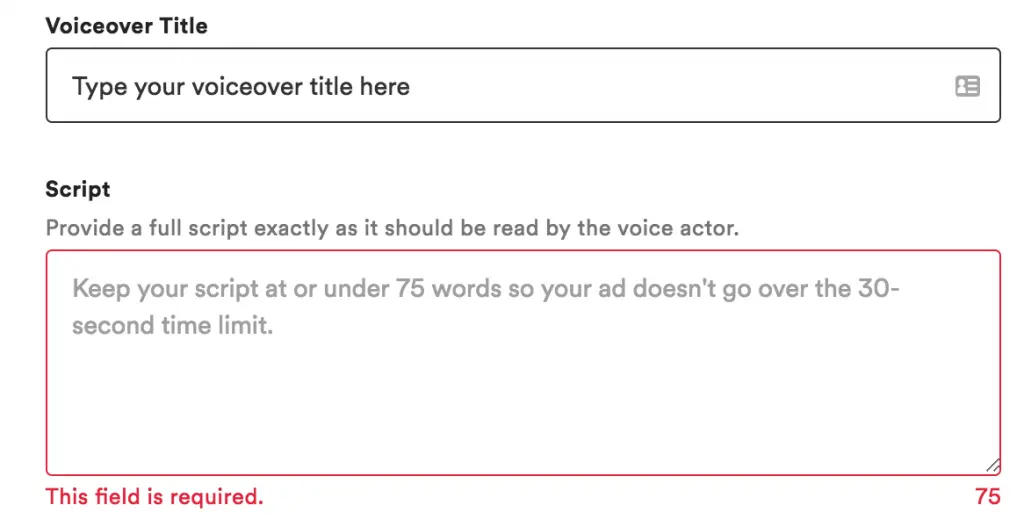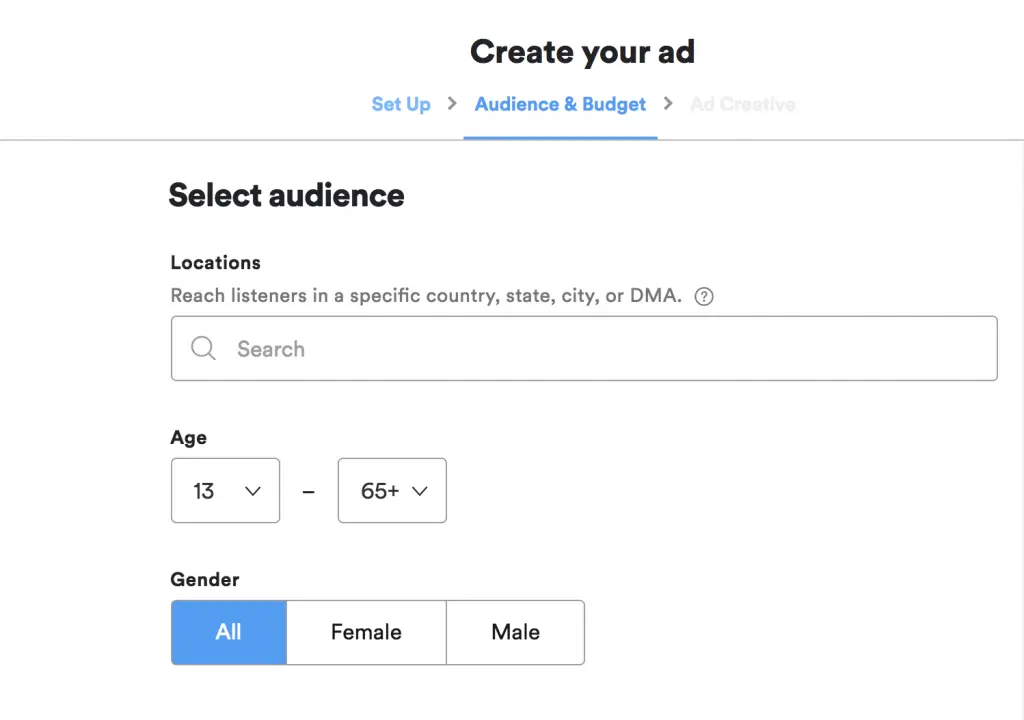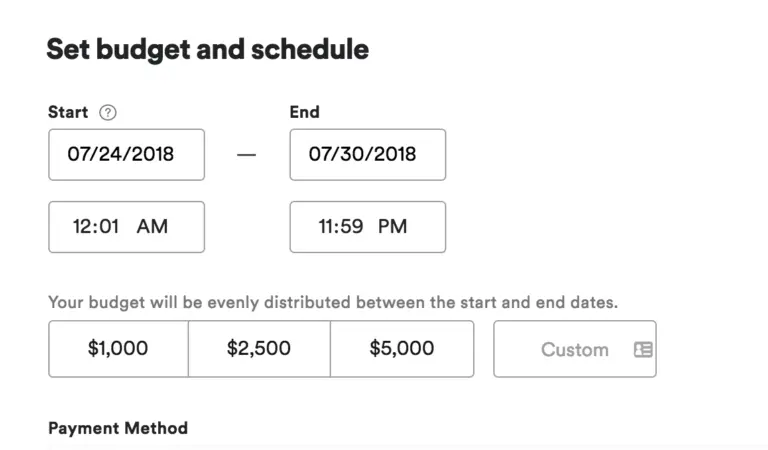In the past, radio was a key part of advertising budgets, with most people tuning in daily, especially during commutes. Today, with over 1 million merchants using Spotify across nearly 1.5 million websites, streaming has taken center stage.
While many users choose the ad-free option, the majority opt for the free version with ads, offering brands a powerful way to reach audiences.
Spotify's self-serve platform makes advertising more affordable, with flexible pricing based on demand. Brands can choose from audio, video, and display ads, ensuring diverse opportunities to connect with listeners between their favorite tracks.
Typical Spotify Advertising Costs
In 2024, advertising on Spotify offers flexibility, with costs varying based on campaign type and targeting options.
The cost per thousand impressions (CPM) typically ranges from $15 to $25, allowing a budget of $250 to yield approximately 10,000 to 16,000 impressions.
This affordability makes Spotify an attractive option for advertisers aiming to reach a broad audience through diverse ad formats, including audio, video, and display ads.
While smaller campaigns often start around $250, costs can scale significantly depending on the campaign's objectives and complexity.
Types of Spotify Ad Formats

Source: niemanlab.org
Although audio ads may seem the most logical on a music streaming platform, Spotify offers a range of ad formats. These include:
- Audio Everywhere (all platforms) – this package allows you to reach your target audience on any device, in any environment, during any moment of the day. Audio ads are served between songs during active sessions, ensuring your brand achieves 100% SOV. As well as an audio spot, Audio Everywhere gives your brand ownership of a clickable companion display unit (in the Cover Art area), letting you extend your campaign and drive traffic to a URL destination.
- Sponsored Session (mobile and tablet only) – this allows you to offer your audience 30 minutes of uninterrupted listening in exchange for watching your brand’s video. Users receive your brand’s Sponsored Session offer only if the app is in view, at the start of mobile sessions. After the video message plays, a clickable display unit appears, inviting further engagement and initiating the 30 minutes of uninterrupted listening.
- Video Takeover (mobile and tablet only) – this allows you to tell your story confidently in a rich, immersive canvas. Video Takeover gives your brand access to a premium app experience where all ads are delivered to logged-in users when they are engaged, and the app is in view. Your video message is served to listeners between songs during commercial ad breaks and includes a clickable companion display unit for campaign extension.
- Overlay (mobile and desktop) – Overlay is a type of display advertising on Spotify. It is delivered when the user returns to the Spotify app, ensuring maximum brand impact. The immersive display unit is clickable and drives traffic to your brand’s URL destination.
- Homepage Takeover (desktop only) – another form of display ad that puts your brand at center stage on the front of Spotify’s Homepage for 24 hours. Homepage Takeover is clickable and supports rich media, enabling brands to include interactive elements to capture attention further.
- Leaderboard (desktop and web player only) – this is a display form that allows you to extend your campaign reach with 100% SOV on-screen – your message will be the only message shown for 30 seconds. Leaderboard display units are clickable and only served when Spotify is the top app on the screen.
- Sponsored playlists (mobile, desktop, web player) – these allow your brand to maximize awareness by exclusively sponsoring Spotify’s top real estate: their owned and operated playlists. Your brand connects with listeners on their favorite playlists — Spotify helps you choose which one best aligns with your target audience. In addition to premium brand placement, your brand surrounds listeners with audio, video, and display ads as they stream the playlist.
Options for Streaming Radio Ads: Pandora vs. Spotify Advertising
When comparing Spotify and Pandora for advertising in 2024, each platform brings distinct advantages that cater to different audience segments and marketing goals.
1. Audience Reach and Demographics
Spotify boasts a massive global audience, particularly popular among millennials and Gen Z. This makes it a prime choice for brands aiming to connect with a younger, tech-savvy demographic on an international scale.
In contrast, Pandora’s user base is more concentrated in the United States, with a strong appeal to listeners aged 25-54. This makes Pandora an effective platform for advertisers targeting a more mature, U.S.-centric audience, particularly those who still favor radio-style content.
2. Ad Formats and Customization
Spotify offers a wide range of ad formats, including audio ads, video ads, display ads, and even sponsored playlists. This variety allows for creative, interactive campaigns, such as video ads that can run up to 30 seconds and audio ads that offer flexibility in length under 30 seconds.
Pandora, on the other hand, emphasizes personalized audio ads powered by its Music Genome Project, which fine-tunes music recommendations to match user preferences. While Pandora also offers display ads and sponsored stations, it provides slightly less flexibility in ad formats compared to Spotify.
3. Cost and Accessibility
Spotify’s CPM (cost per thousand impressions) generally falls between $5 and $30, with larger campaigns requiring a minimum spend of $25,000. However, smaller campaigns can start at just $250, making Spotify accessible to a wide range of advertisers.
Pandora tends to be more budget-friendly, with CPMs ranging from $5 to $25 and minimum campaign packages starting at $1,500. This can make Pandora a more attractive option for advertisers with a focus on the U.S. market and a need for cost-effective solutions.
4. Personalization and Engagement
Spotify excels in personalization, offering features like custom playlists and interactive ads with call-to-action buttons that drive higher engagement. Its on-demand streaming model provides deep insights into listener behavior, enhancing targeting and measuring campaign effectiveness.
Pandora, with its radio-style format, creates a highly personalized listening experience that fosters a strong connection with its audience. Although less interactive, Pandora’s ads tend to be more seamlessly integrated, often feeling less intrusive and more relevant to listeners.
How to Set up A Spotify Advertising Campaign
You can easily create your Spotify ad campaign using the self-service platform, Spotify Ad Studio. It is currently available in the US, UK, Canada, Australia, and New Zealand. They hope to shortly add an English-only version of Ad Studio in 17 new markets across the globe with select advertisers. These additional markets will be Spain, Germany, Italy, France, Norway, Denmark, Finland, Ireland, Netherlands, Mexico, Colombia, Chile, Argentina, Philippines, Singapore, Malaysia, and Taiwan. They also plan to launch versions of Ad Studio in Mexico and Spain later this year (2020), fully translated into local languages.
If Spotify Ad Studio is available in your country, create an account, and then you can sign in when you are ready to create your advertising campaign.
1. Choose Your Objective
You begin your campaign by selecting one of two objectives for your campaign:
- Raise awareness for a brand, business, or organization
- Promote a concert or music related content
In practice, setting up your campaign will be similar for both objectives; however, the second objective helps you target fans of a particular musician.
You are also asked to give your campaign a name at this point, which is useful if you run multiple Spotify campaigns.
2. Upload Audio or Request a Voice Over

You might already have recorded the audio you want for your Spotify campaign. If so, select Upload Audio at this point.
Many smaller businesses, however, won’t have audio yet. Spotify offers a free voiceover if you need one. If you wish to take advantage of this offer, you need to upload a script, and Spotify will record a 30-second voiceover for you.
3. Target Your Audience
Spotify sees the key to successful marketing on its platform is effective targeting. They state that campaigns that include playlist targeting drive 2.1x higher intent than those that don’t.
You can target in multiple ways. Options include:
- Playlist - this allows you to connect with people who are listening to music tailored to specific activities and moods
- Genre - deliver your message immediately after a user has listened to a specific genre, i.e., type of music or spoken audio
- Platform - dynamically serve campaigns to users based on their active platform, for example, their app platforms (iOS, Android, web, etc.), connected devices (gaming consoles, connected speakers, TVs, car), mobile OS, device, or carrier
- Location - Reach listeners in a specific country, region or city based on their real-time streaming location
- Time of Day - use dayparting to deliver relevant messaging when users are most engaged, or to complement broadcast buys
4. Set Your Ad Budget and Schedule
Your next task is to tell Spotify the maximum amount you are willing to pay for your advertising campaign and provide them with some details about how you want your money to be spent.
Remember, that you must allow at least $250 (or technically, 250 of your local currency) for your campaign. Spotify will determine the cost per ad served, based on factors such as your targeted audience and location. The more granular your targeting, the more expensive your ads, as you will be reaching more useful people and fewer irrelevant listeners. Spotify will tell you their estimated number of ads served for your budget, and you can increase this number if you are willing to increase your budget.
You are also asked to set starting and end dates and times for your campaign. Spotify distributes the ads it serves between these times, ensuring that you don’t “use up” your paid-for ads before the end of the campaign. Spotify doesn’t charge your account until the end of the campaign, however.
Create Your Ad
The final stage in your ad creation process involves uploading all the necessary creative for your campaign. This includes all your display copy, headlines, artwork, videos, and links to landing pages.
Frequently Asked Questions
How much does it cost to advertise on Spotify?
Advertising on Spotify typically costs between $15 and $25 per thousand impressions (CPM). With a minimum spend of $250, advertisers can expect to reach approximately 10,000 to 16,000 listeners. This flexibility makes Spotify a cost-effective platform for both small and large campaigns, offering a range of ad formats to suit different marketing goals.
What types of ads can I run on Spotify?
Spotify offers a variety of ad formats, including audio, video, and display ads. Options include Audio Everywhere, Sponsored Sessions, Video Takeover, Overlay, Homepage Takeover, Leaderboard ads, and Sponsored Playlists. Each format is designed to engage users at different points in their listening experience, providing multiple ways to connect with your target audience.
Is Spotify advertising effective for reaching younger audiences?
Yes, Spotify is particularly effective for reaching younger, tech-savvy audiences, including millennials and Gen Z. With its massive global user base, Spotify allows brands to engage these demographics through personalized and interactive ad formats, making it an ideal platform for advertisers targeting younger listeners.
How does Spotify advertising compare to traditional radio ads?
Spotify ads offer more precise targeting and a wider range of ad formats compared to traditional radio ads. While radio ads reach a broad audience, Spotify allows for granular targeting based on listener demographics, interests, and behavior. Additionally, Spotify’s digital nature enables better measurement and tracking of ad performance, leading to more effective campaigns.
What is the best ad format for driving engagement on Spotify?
Sponsored Sessions and Video Takeovers are particularly effective for driving engagement on Spotify. Sponsored Sessions offer users 30 minutes of ad-free listening in exchange for watching a video ad, creating a positive association with the brand. Video Takeovers deliver immersive experiences during active user sessions, ensuring high engagement with visual and clickable content.








